Living in a rural area with lots of wildlife, starting with black bears, whitetail deer, raccoons, wild rabbits, and chipmunks, I have lots of experience in protecting my garden. In spring when all is about to be planted outside in garden beds, the most important thing for me is how can I protect my vegetables from being eaten by wildlife. After several years of gardening with wild animals of all sizes, I have found two most effective ways how to protect my fruit and vegetables.
Protect vegetable garden beds by installing a fence around your garden. Use hoops and garden netting to cover your vegetable and fruit garden beds. Install a motion-activated water sprinkler, and wrap your fruit like peaches, apples, and veggies like tomatoes, and winter squash in knee-high stockings. All these methods combined will give you the best result in protecting your vegetable garden beds.
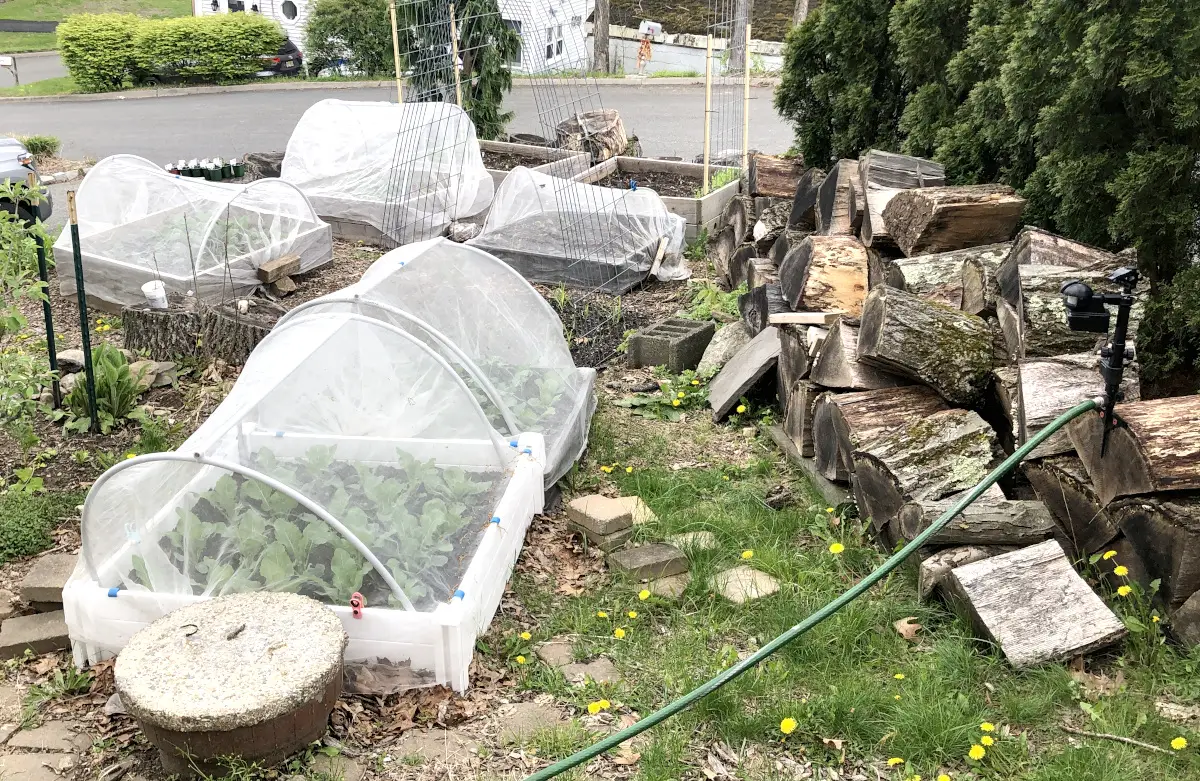
Let me start by saying that I do not have a vegetable garden fenced in. I could not install a fence because the black bear would probably knock it over, raccoons would climb it and chipmunks would find a way in. My garden is also divided into several growing spaces on several different growing lots. I simply can’t have all four of my growing spaces fenced in, the layout and the logistic does not enable it.
The other day, I met a local beginner gardener and she was amazed I have a garden with all the veggies and flowers and no fence. She was amazed and could not believe this was possible in our local area.
I shared with her how I protect my garden beds, and if you allow me, I will share it with you too, and include photos of how I protect my garden beds.
Our lot and thus my garden is a corner lot with roads on all three sides of the property. This means that bears, deer, and all wildlife used our property as a shortcut to get to the other side! At night we got black bears crossing, deer crossing and of course raccoons and skunks. At night, our property turned into a crossroad for all the local wild animals. They simply went straight through our property rather than following the course of the paved roads, of course. Our motion-activated lights were just going on and off. And bears stopped by to munch in the trash simply popping the screwable lid off of the trash can. The bear laid the can down and using his front paws squashed the side of the can popping the lid off! What a clever bear! And we thought the bear won’t be able to unscrew the lid! Well, he did not need to, he just popped it.
You can imagine what it is like to grow vegetables and fruit right in the middle of the wildlife crossroad! Impossible to grow anything. After brainstorming with my husband and doing lots of research online, we decided to install a motion-activated water sprinklers. We got these. The distance of motion to detect something and the distance of how far the water sprinkles are all adjustable. They also have a timer setting with options for day, night, or both. As the sprinkler starts to sprinkle water it makes a startling noise, which startles the animals. The startling noise is not loud at all, we can’t hear it with our windows closed. We let them go only at night as we like to be outside and not get wet.
A GOOD READ: What vegetables do not have pests?
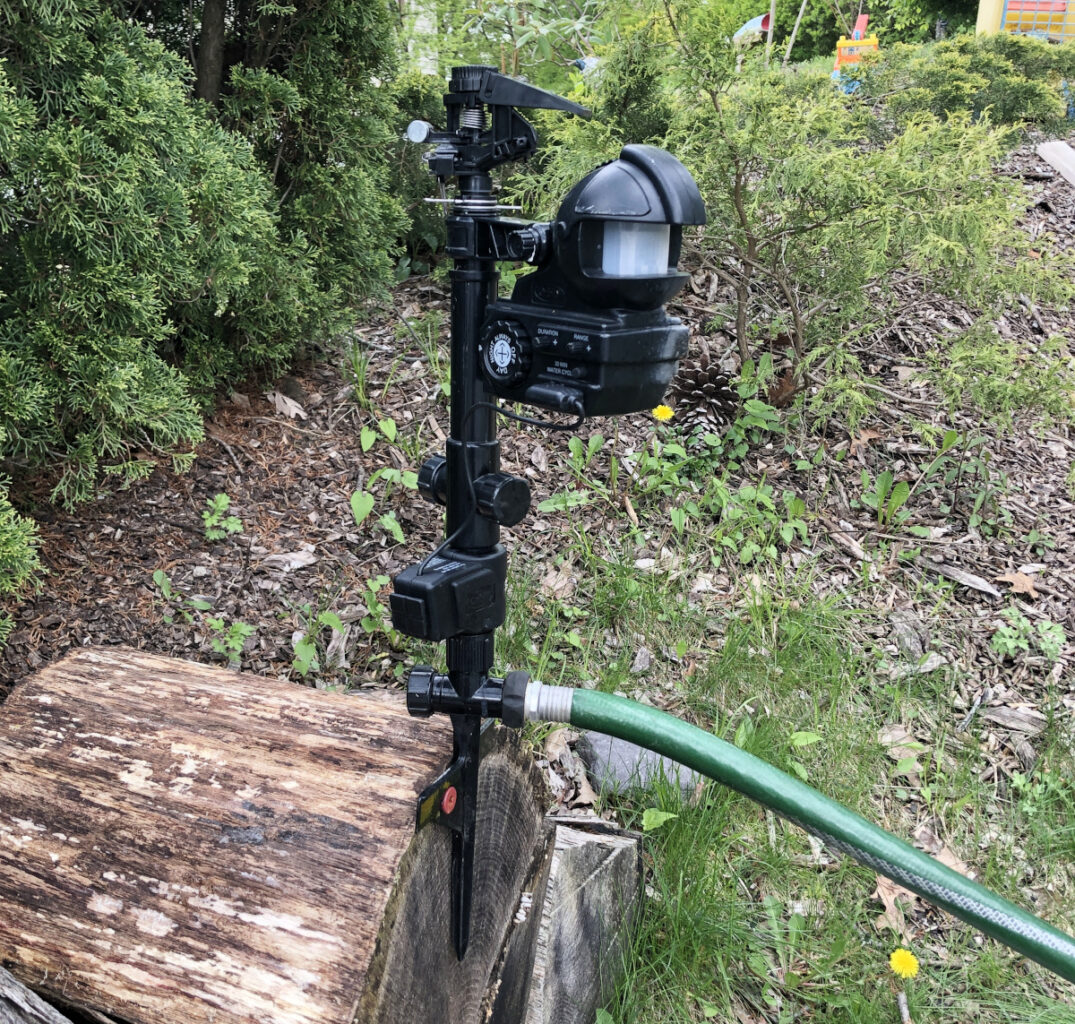
The night we installed them we found a deep deer track in our garden and deer fur left on one of our fruit trees. All these told us that the deer got scared and run for his life after the sprinkler detected it. No more bears, raccoons, deer, or anything that could be detected by the sprinkler crossing our property at night. Wild animals hate to be startled and sprayed with water. This year we only have 2 sprinklers installed and they cover all my main garden lots. If you don’t have motion-activated sprinklers, get some, they make some of the best protection for your garden beds.
The second way I protect all my garden plants besides vining plants is by covering beds with netting. I use hoops that I install in the garden bed and cover them with garden netting. I use plastic hoops and wood branches that I bent into hoops that grew out of the tree stump we cut down. I use this garden netting. It is sturdy and very durable, it lasted me several seasons and I reuse it each growing season again and again. This one is a bulk package measuring 10×100 feet. I do not like to purchase small packages of something I need a lot of. Buying small costs a lot. Buying in bulk saves money and all the hustle of ordering again and again. 100 feet of this netting will cover at least 10 of my 4×4 and 4×8 garden beds!
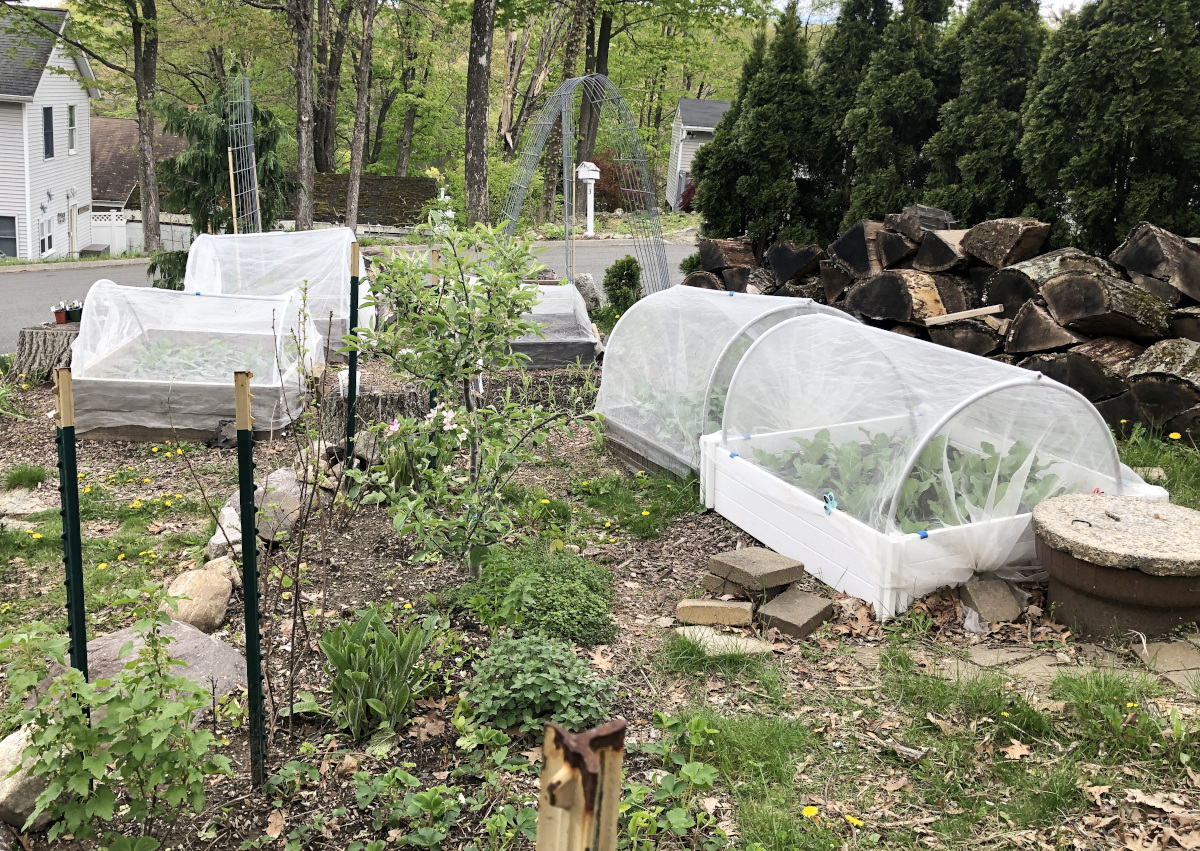
If I do not cover my garden beds with netting, chipmunks, squirrels, snails, and those dreaded cabbage moths will eat my crops, especially the cool-weather crop. It is one thing to get rid of tall wildlife but tiny ones like rodents, moths, or bugs are a totally different game! These need to have a tiny barrier covering all the plants, if not, they will get in.
Since I cover my crops with garden netting, I do not have rodents, bugs, or caterpillars that hatched out of cabbage months eating my crops. In fact, this year’s cool-weather crop looks the best I ever had!
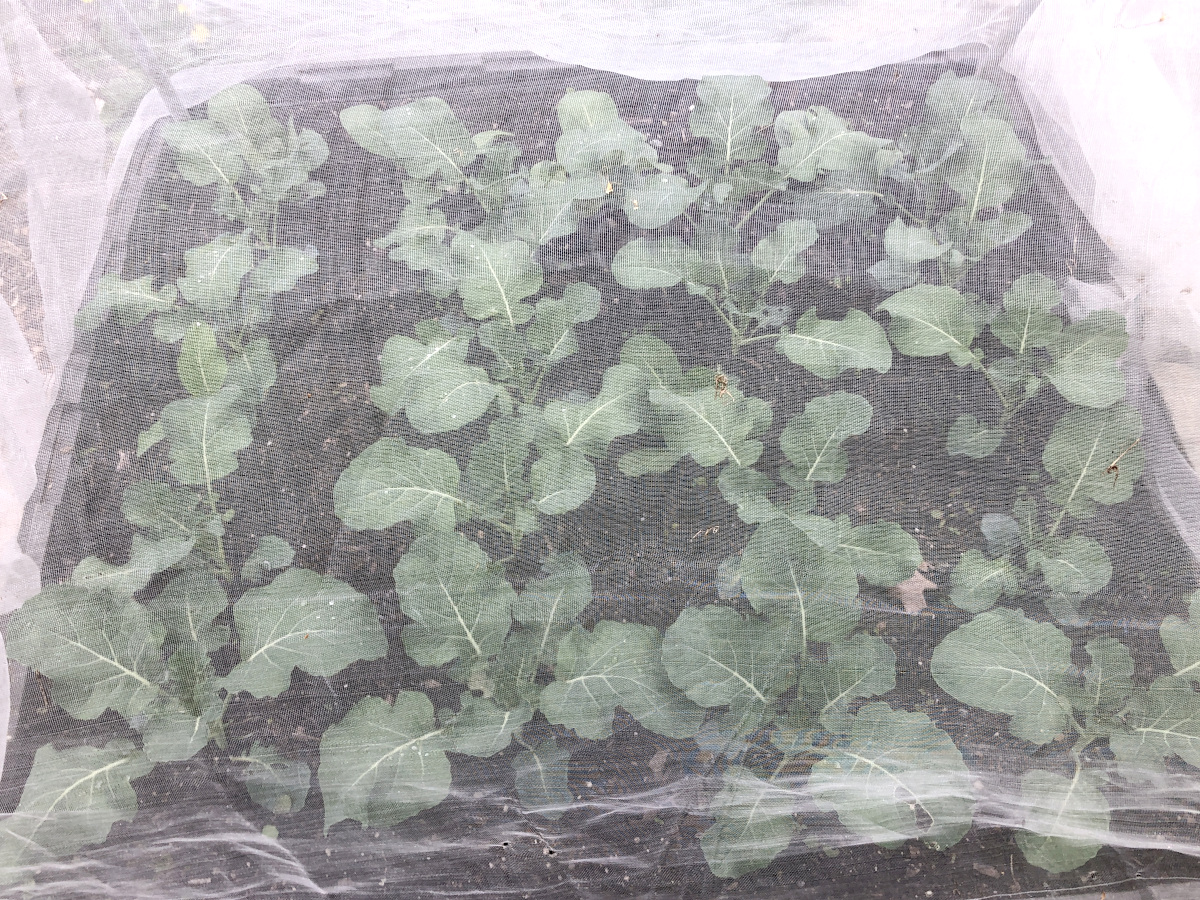
How do I protect my vegetable garden from animals without a fence?
Protect your vegetable garden from animals without a fence by installing a motion-activated water sprinkler that startles and sprays the animals and makes them run away. Use hoops and net covering for all garden beds to protect your fruits and vegetables.
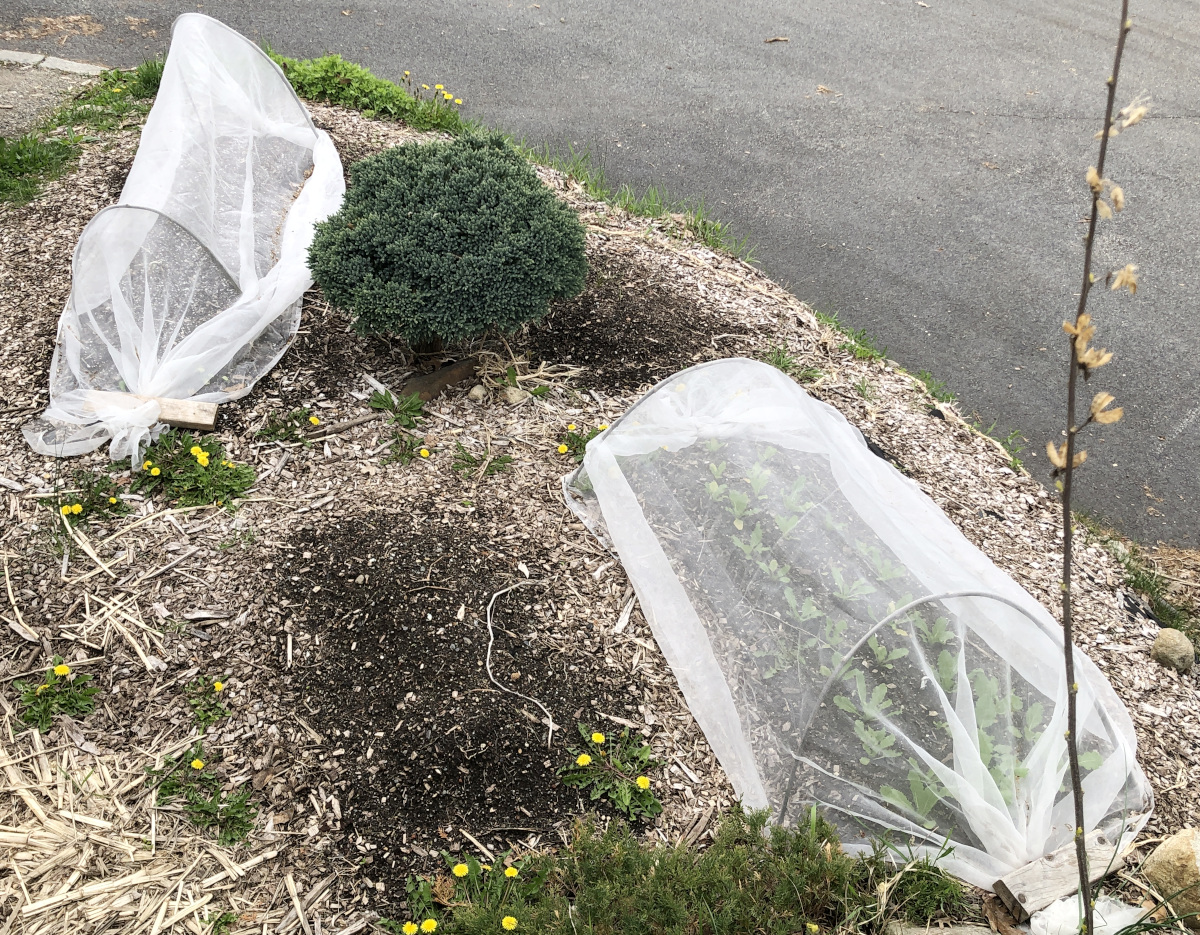
These two things, the motion-activated water sprinkler and hoops with netting totally changed my gardening game! I actually can harvest what I planted! The fruit is still there not eaten by anything, it’s hard to believe!
As for the fruit trees, I only have dwarf fruit trees which I protected in the past using net coverings. This was so far the best protection that really worked and we got a harvest, just ensure the net is well fastened to the trunk of the tree with no gaps. The problem with covering the whole tree top with netting is that the tree needs to be covered like this for several weeks. During that time the tender new branches grow and the netting bents them. All the branches ended up crooked, this was the problem for me, unless you prune them and keep only the old, established branches. The biggest pest that eats my fruit (peaches) are chipmunks. To eliminate them, I also place a trap at the foot of the tree to catch them. This works well too but did not completely protect the fruit.
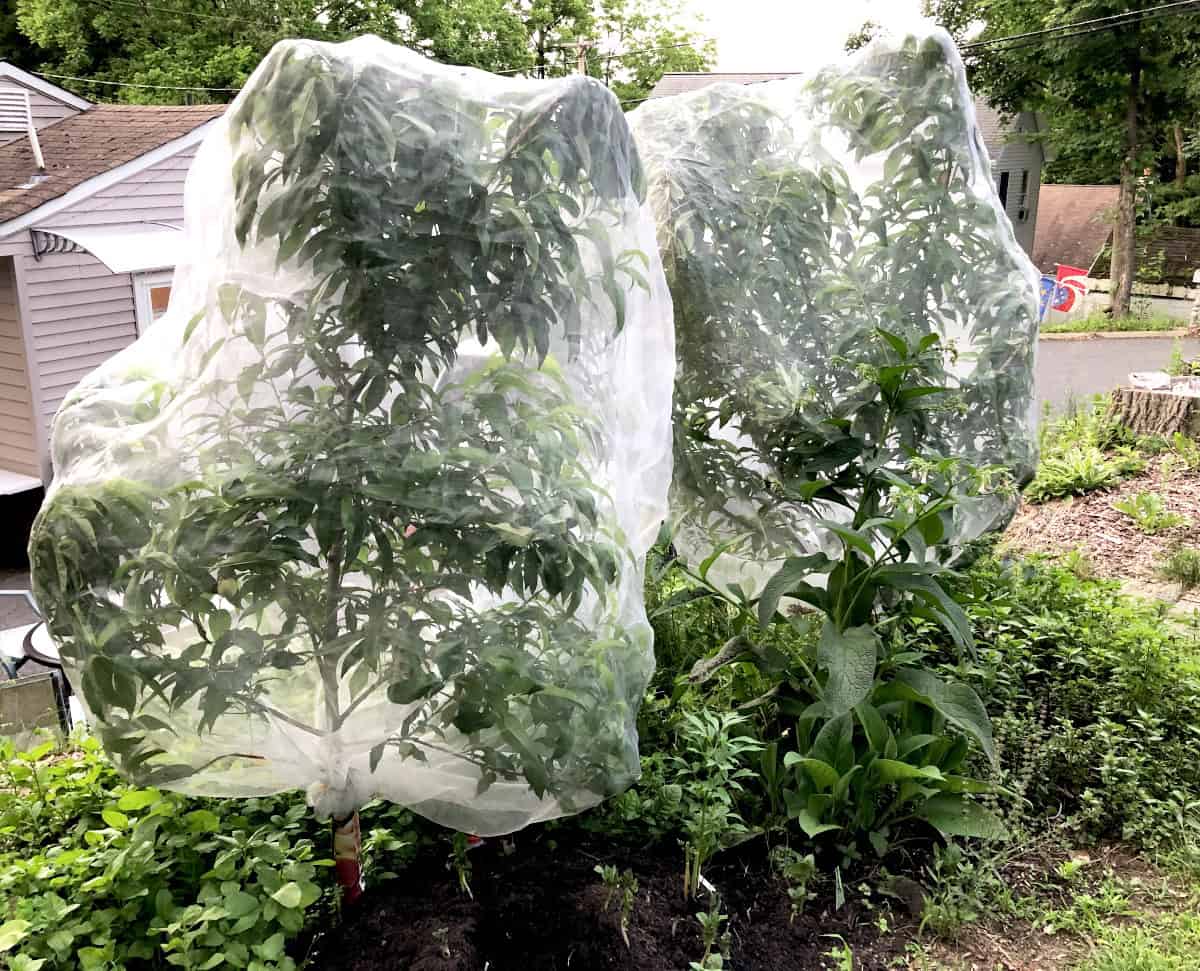
This year I am planning to use these individual nets to wrap the fruit in. If this does not work, I would go back to covering the whole tree top with netting.
I have a saying: what is not covered with netting, will be eaten, but not by you! I cover everything besides the plants that are too tall and vining, like tomatoes, beans, peas, and besides garlic, onions, and herbs.
I prefer to use netting instead of chicken wire simply because the chicken wire is harder to work with and has very large holes which let rodents and cabbage moths in. I absolutely like using garden netting, as it is a breeze to use, has no hustle, and is very effective in my garden. Even large plants like tomatoes can be covered using netting, simply throw a net over the plant and tie it with a hook and loop tie on the bottom. Done!
TIP: I use this hook-and-loop tie in my garden for everything. This hook and loop tie comes in a large roll, you cut it into the length you want and reuse them over and over because they are so durable! One side is fuzzy and soft, which I use to face the plant stems. I tie my climbing roses with it, tie my netting with it, and tie the cables indoors. This tie is great for indoor or outdoor use. One roll is 50 feet long, so will go a long way. They were created for all weather and last for many growing seasons. I collect mine after each growing season and roll them into a roll to be used the next growing season. Endless uses, simply an excellent tool for any gardener and a must-have in my shed, office, and craft supplies!
How do I keep bugs out of my garden bed?
To keep bugs out of the garden bed use bug traps and lures that attract the bugs in and do not let them bugs get out to destroy your plants. Sprinkle the plants with diatomaceous earth using a powdered sugar duster.
This year to get rid of Japanese beetles I am planning to use this trap and lure. This trap and lure attract Japanese beetles, lure them in, and do not let them out.
As for the cucumber and squash beetles, aphids, and whiteflies, I am planning to sprinkle them with diatomaceous earth simply using a powdered sugar duster! If needed I plan to up my game using yellow bowls filled with water and dish soap to lure the cucumber beetles in. As a last result, I am thinking of using yellow sticky traps if everything else fails. I used these to catch gnats and they worked.
How do I protect my pumpkin patch from animals?
Protect pumpkins from animals by wrapping them in knee-high stockings. Simply take a knee-high stocking and put the pumpkin in. Stockings create a physical barrier that is unappealing to animals, it creates a physical barrier to protect the fruit.
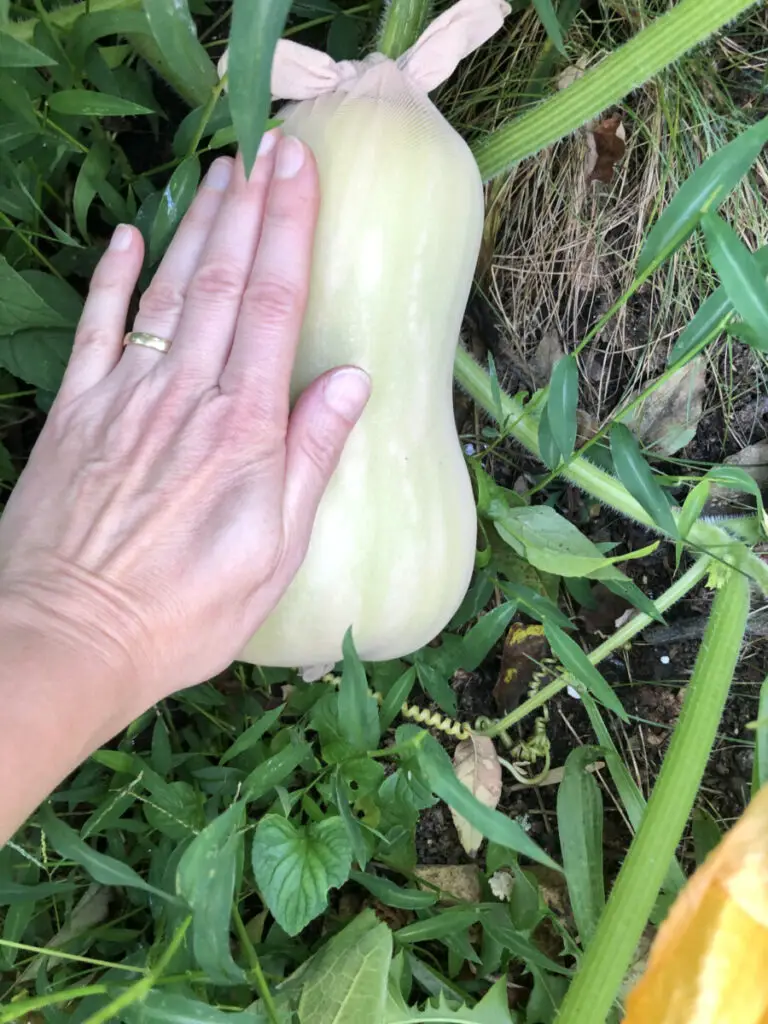
I learned this trick years ago. I read somewhere online about it and immediately applied it in my garden. Growing winter squash such as butternut squash and spaghetti squash is my favorite and a must pantry stocking crop in my garden! These are so easy to grow, they grow well in almost all soils and require almost no babysitting. They grow like weeds in my garden. I protect them from rodents, chipmunks, and other pets that also lays eggs in them by wrapping them in knee-high stockings. The stockings are very stretchy and they stretch out as the pumpkins grow. It’s like a netting that expands with the fruit.
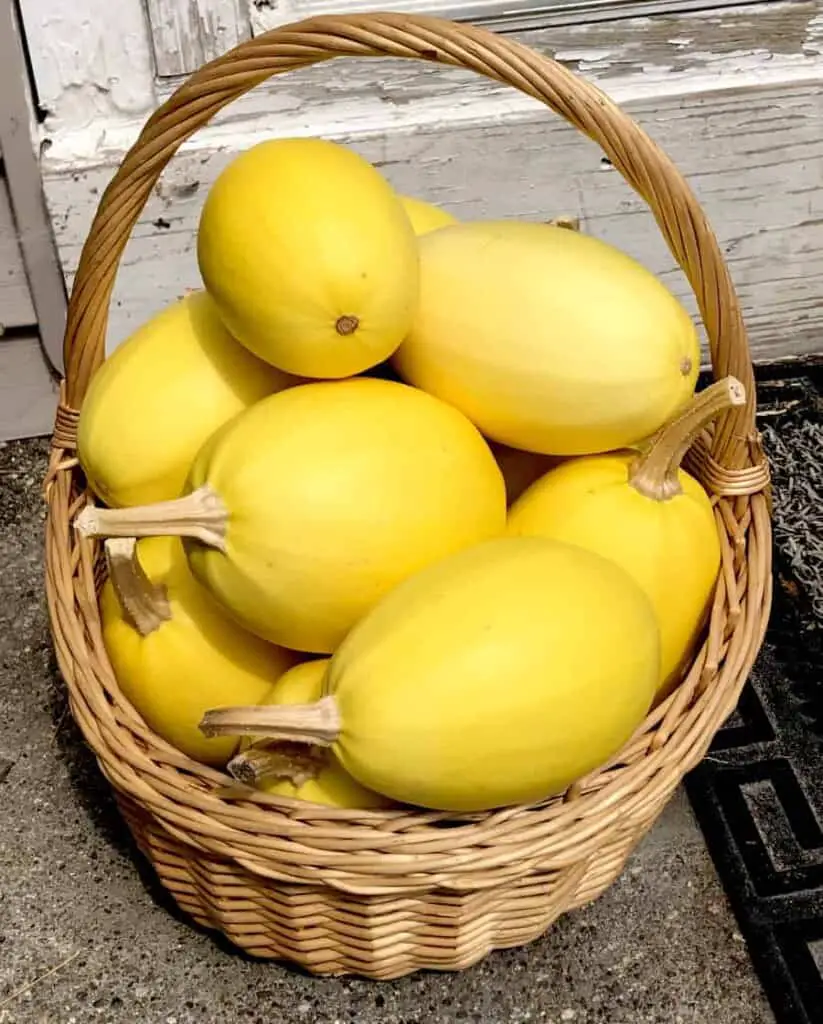
Although I think planting herbs, alliums, and marigolds around the vegetables is cute, it does not actually protect the vegetables from being eaten. If you do not physically cover the veggies, they will be eaten by pests.
Share with me and the readers what techniques you use to actively protect your vegetables and fruit from pests and wildlife.
What vegetables do not have pests?
How do you restore raised bed soil?
How can I grow my own food cheaply?

